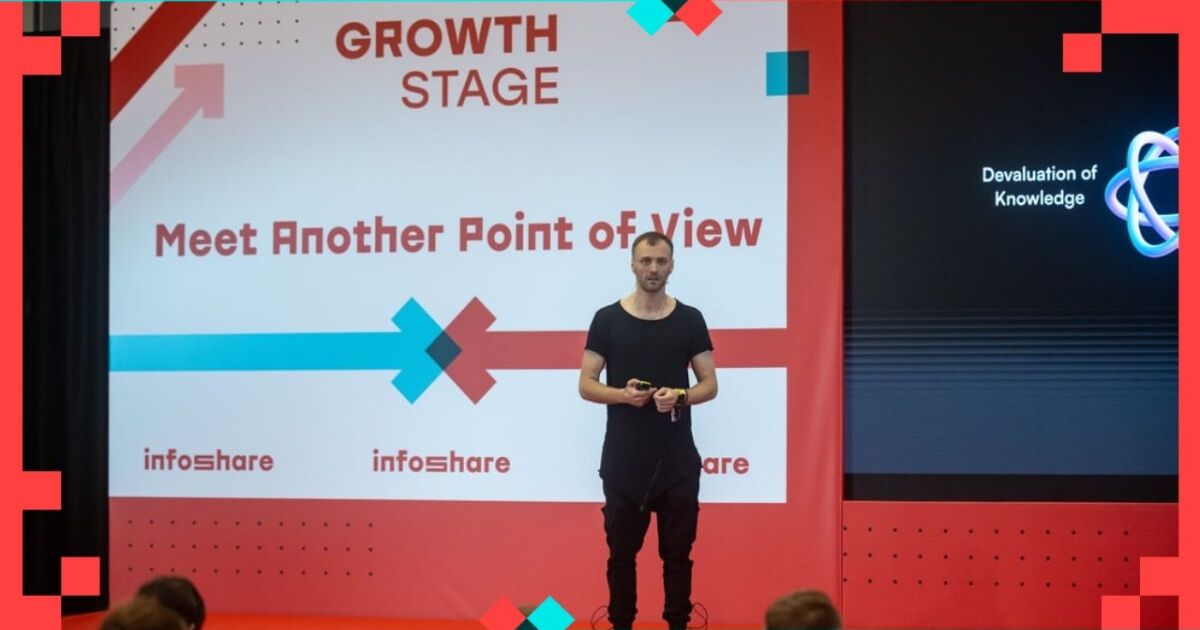VIEW SPEECH SUMMARY
- The value of knowledge is rapidly declining due to exponential increase in information availability, largely driven by artificial intelligence (AI).
- Job stability perception is decreasing, leading to widespread employment anxiety and a problematic obsession with specialization.
- Roles at work continually evolve, increasing confusion and expectations, with role scope creep requiring skills beyond initial specialization.
- These forces create pressure ("the squeeze") causing feelings of paralysis and hopelessness among workers.
Main Points:
- Knowledge alone no longer differentiates workers; knowing is commoditized because AI rapidly provides access to vast information.
- Specialization can be a trap since over-specialization increases vulnerability to disruption; generalization alone also limits value creation.
- Creativity and the ability to make novel connections between unrelated domains remain uniquely human advantages, not replicable by AI.
- Speed of learning and applying new knowledge is a new critical skill and scarce resource in the job market.
- Rise of independent work and alternative career paths (e.g., portfolio careers) offers new hope and flexibility.
- Innovation increasingly happens at intersections of domains, creating entirely new roles and value systems (e.g., tokenomics designers, biomimics).
- Discovering “secrets” at unexplored intersections between fields leads to novel opportunities.
Actionable Items / Tasks:
1. Become a Knowledge Synthesizer:
- Identify domains where you have sufficient depth of knowledge.
- Search for bridges and connections between these domains by asking probing questions.
- Experiment with ideas to uncover valuable insights at domain intersections.
- Focus on creating tangible value through this synthesis.
2. Develop Key Skills:
- Enhance your ability to learn quickly and apply new knowledge flexibly.
- Cultivate creativity to make novel connections and pattern recognition beyond AI capabilities.
- Embrace adaptability as roles and expectations continue to evolve.
3. Explore Alternative Career Paths:
- Consider independent work or portfolio careers aligned with your passions and unique skill combinations.
- Seek emerging and interdisciplinary roles that combine different fields.
4. Embrace the Intersection of Domains:
- Look for “unexplored territories” where you can combine knowledge from different areas.
- Study examples like material ecology (combining architecture, biology, and digital technology) for inspiration.
Conclusion:
- In an uncertain future dominated by AI and information overload, human advantage lies in creativity, synthesis, and adaptability.
- The future belongs to those courageous enough to stand “between worlds” and synthesize knowledge across multiple domains.
- By becoming synthesizers, individuals can turn market pressures into new opportunities and transform paralysis into agency.
Beyond Expertise: Why the Future Belongs to Knowledge Synthesizers
14:45 - 15:05, 28th of May (Wednesday) 2025 / GROWTH STAGE
In a world obsessed with specialization, we've overlooked a powerful catalyst for innovation: the intentional synthesis of diverse knowledge domains.
Drawing from neuroscience, professional development research, and real-world success stories, this talk reveals how the most groundbreaking innovations emerge at the intersection of seemingly unrelated fields.
I'll show you why traditional career paths are giving way to "domain synthesis" - a structured approach to combining disparate expertise that creates unique value impossible to replicate. Through fascinating examples – from biodesign revolutionizing sustainable materials to digital therapeutics transforming healthcare – you'll discover practical frameworks for identifying your own synthesis opportunities.
The future doesn't belong to specialists or generalists, but to synthesists who bridge worlds and create what's never existed before. The question isn't whether you should specialize or generalize – it's what unique domains you'll bring together to create tomorrow's breakthroughs.



